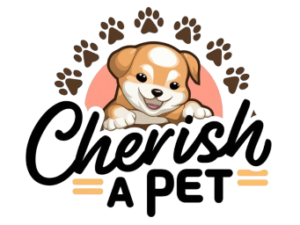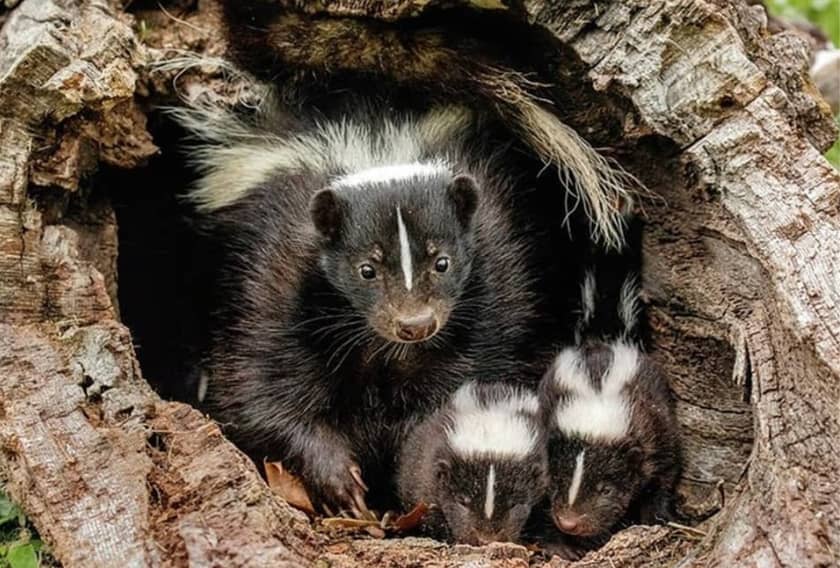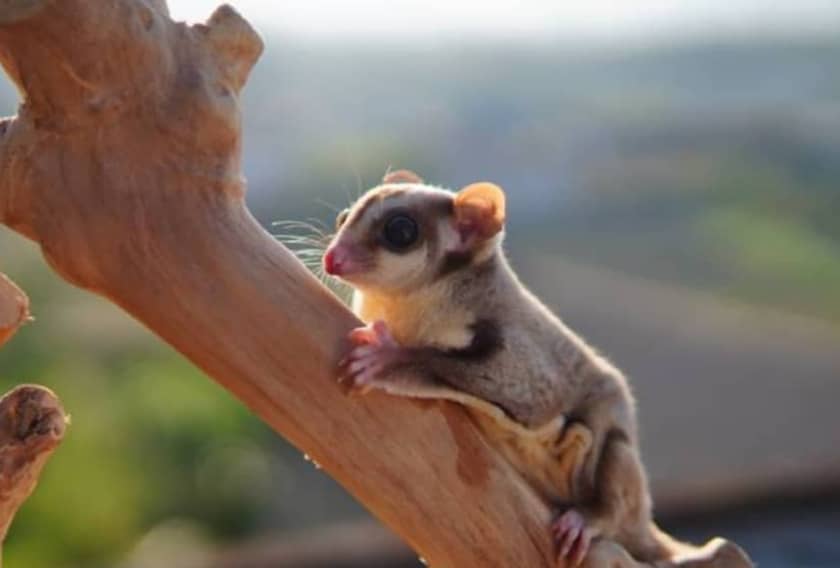Sweet, playful animals and domestic ferrets have always won hearts all across America and globally. Truly one of the perfect pets for those who understand and appreciate their special needs, they have curious natures, boundless energy, and charming individuality.
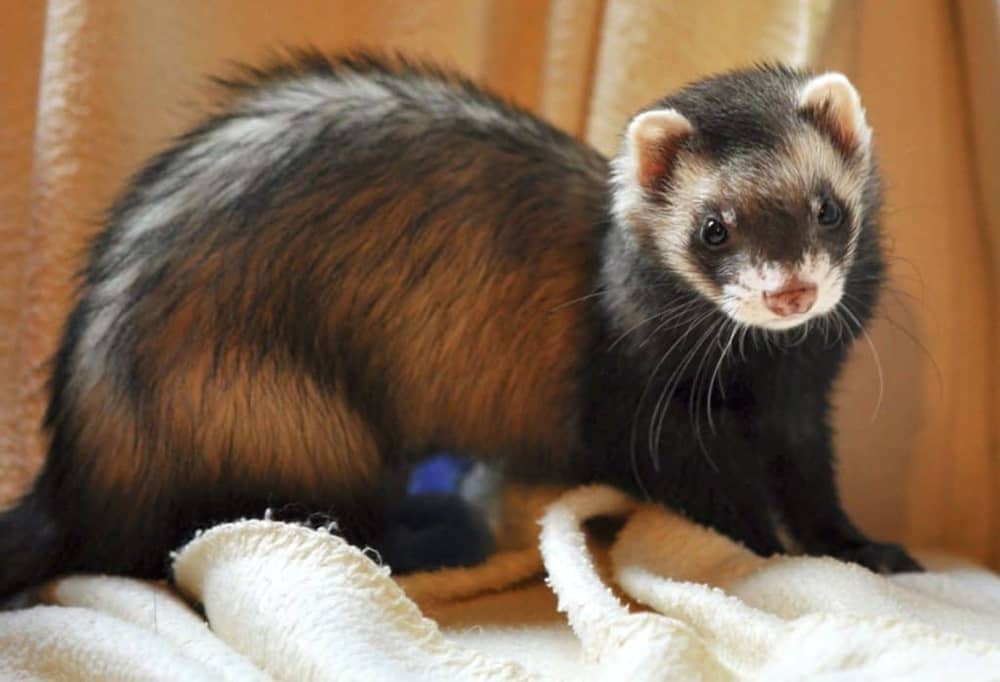
The domestic ferret is an exceptionally charming and playful animal, arriving in many colors and patterns. Moreover, this diversity adds not only to their visual appeal but also makes each ferret special in its own right. The following is an in-depth guide about domesticated ferret types, characteristics, and basic guidelines on how to care for such endearing creatures toward living a happy, healthy life.
What are Domestic Ferrets?
Ferrets are a domesticated form of the European polecat and date back thousands of years as pets. They fall into the category of small carnivorous mammals of the weasel family, Mustelidae. Their body shape is rather elongated with very short legs, and as such, they are fond of burrowing and investigating.
Small, carnivorous animals and domestic ferrets are renowned for their lively and inquisitive personalities. They come in a range of colors and patterns and have a lifespan of six to ten years. Ferrets are well-liked and entertaining pets because they are gregarious animals who like socializing with people and other ferrets.
Types of Domestic Ferrets: Colors and Patterns
The domestic ferret is one of the most playful and mischievous creatures in nature that gain many a heart and prove to be perfect companions. Their variety only increases with the different colors and patterns that make them even more endearing.
The American Ferret Association distinguishes ferrets by colors and patterns. This knowledge allows breeders and owners to know their pets’ peculiar characteristics and needs. Much more than pets, ferrets become family.
With love and care, your ferret will live a long, happy, healthful, playful life. Whether you are an established ferret owner or plan to adopt your first ferret, this guide intends to provide some valuable insight into the world of domestic ferrets and the many joys they bring to our lives.
Description of the different breeds of ferrets kept as pets by color and pattern:
Distinguishing Ferrets Based on Colors
Before we consider specific ferret types, there should be a basic overview of ferret coloration and patterning. Ferret color is determined by the interaction between two pigments: eumelanin, responsible for black or brown colors, and pheomelanin, responsible for red or yellow colors. The different colors and patterns seen in domestic ferrets result from this combination and distribution of both types of pigment.
Albino Ferrets
Description: The albino ferret is one with pure white fur and pink or red eyes. Their fur and eye pigment are caused by pigment deficiency through genetic mutation. It causes an albino ferret to have very sensitive eyes and skin, so it needs to be protected from bright lights and too much sunlight.
Physical Description:
- Pure white fur
- Pink or red eyes
- Light sensitivity
Temperament:
Albino ferrets are very docile and friendly. Normally, they are much more easygoing than other ferrets, so they will be more suitable for families, and for those needing a low-maintenance and non-turbulent pet.
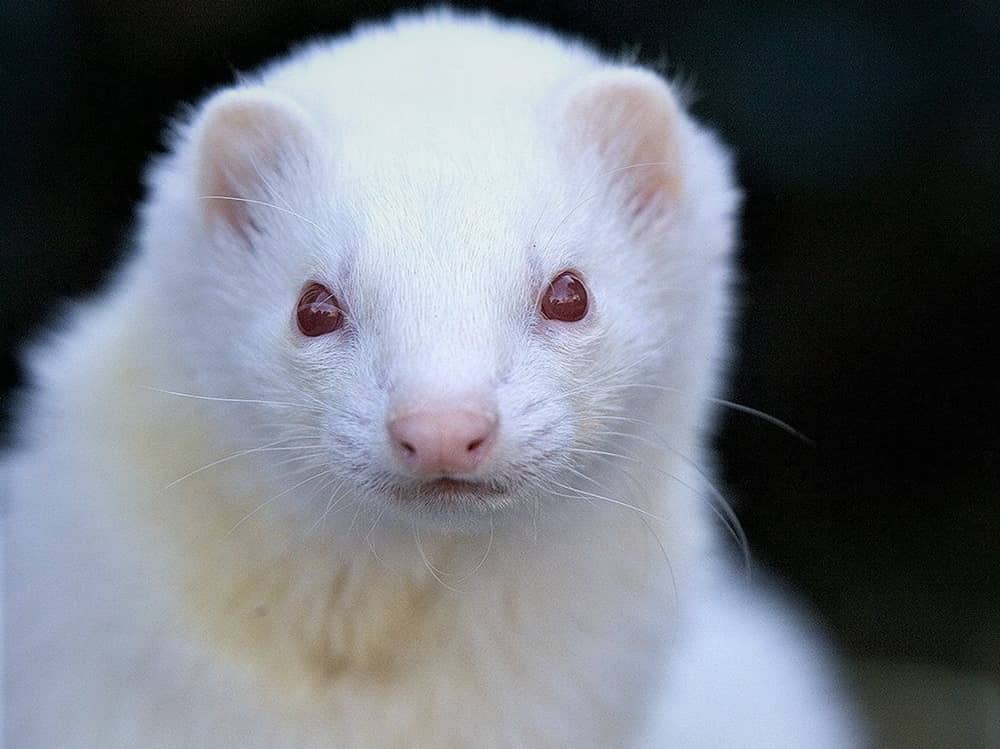
Sable Ferrets
Description: The sable ferret is one of the most common types of domesticated ferrets. The coat color varies from very dark brown to black, while the undercoat is lighter. Their eyes are quite dark, and they often have a characteristic mask pattern on their faces.
Characteristics:
Coat: dark brown to black
Undercoat: light
Eye color: dark
Mask pattern on the face
Personality:
Sable ferrets are full of life and curious, which means they like to engage in playful activities. They are very social and their interactive playfulness can extend to playing with their owners or other ferrets.

Cinnamon Ferrets
Description: The Cinnamon Ferret does have a reddish-brown coat color or light brown, with a warm shade nearly like cinnamon. Their eyes are generally dark, and they might have a mask similar to the Sable Ferrets. The cinnamon ferret is pretty rare and in high demand.
Characteristics:
Color of coat: light brown, reddish-brown
Eye color: dark
The presence of a mask pattern is possible
Personality:
Cinnamon ferrets are amiable and social. With their playful and energetic nature, they are excellent companions for active households.
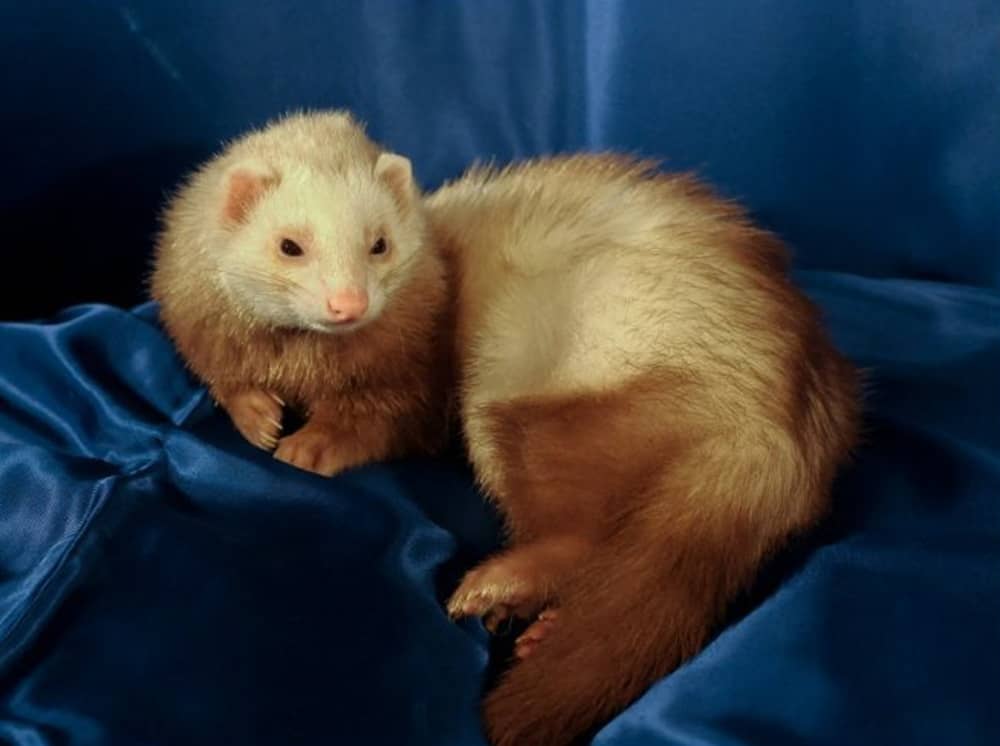
Chocolate Ferrets
Description: Chocolate ferrets are typical ferrets with rich, chocolate-brown coats and lighter-colored undercoats. Their eyes are usually dark and some may have a mask pattern on their faces. This chocolate color is one of the rare traits many ferret breeders look for.
Physical Description:
Chocolate-brown in color
Lighter undercoat
Dark eyes
Mask pattern present or absent
Character:
One would judge a chocolate ferret as an affectionate and curious creature. They like to explore an environment and get attached to their owners.

Black Sable Ferrets
Description: The black sable ferret will have a very dark, near-black coat color with a lighter-colored undercoat. The eyes are typically dark in color, and in most cases, a mask pattern is quite prominent. Their deep, rich coloration gives them the appearance of being sleek and refined.
Physical Characteristics:
Very dark, near black coat
Lighter-colored undercoat
Dark eyes
Distinct mask pattern
Personality:
They are playful and mischievous. Therefore, one needs to ensure that they are involved in various mental and physical activities to keep them very active.

Champagne Ferrets
Description: Champagne ferrets are those that bear lightly tanned or beige coats with cream or white undercoats. Champagne ferrets have a soft, light brown coat with a cream or tan underbelly and mask, giving them a warm, champagne hue. They have dark eyes and a friendly, playful temperament, making them popular pets.
Characteristics: Their eyes are almost light brown or burgundy.
Personality: These ferrets are known for their curious and energetic nature.
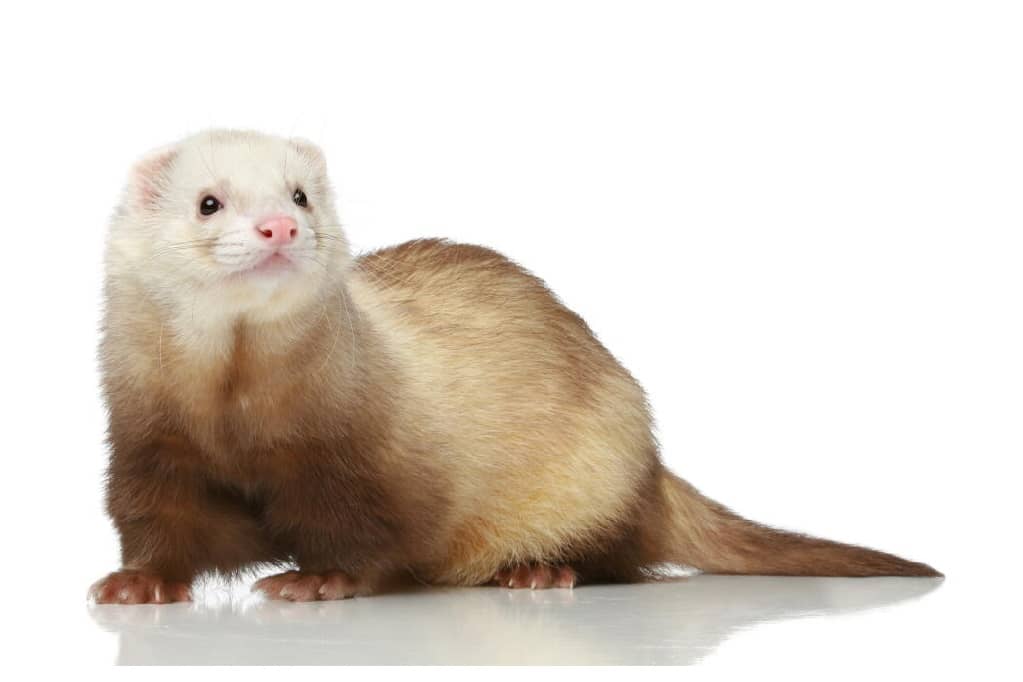
Dark-Eyed White Ferrets
Description: Dark-eyed white ferrets have a white or cream-colored coat with dark, expressive eyes, giving them a striking appearance.
Characteristics: A White ferret with dark eyes; they can have some scattered darker hairs, but white.
Personality: They are known for their gentle and affectionate nature, often being very social and bonding well with their owners. These ferrets are playful and curious, making them delightful pets.
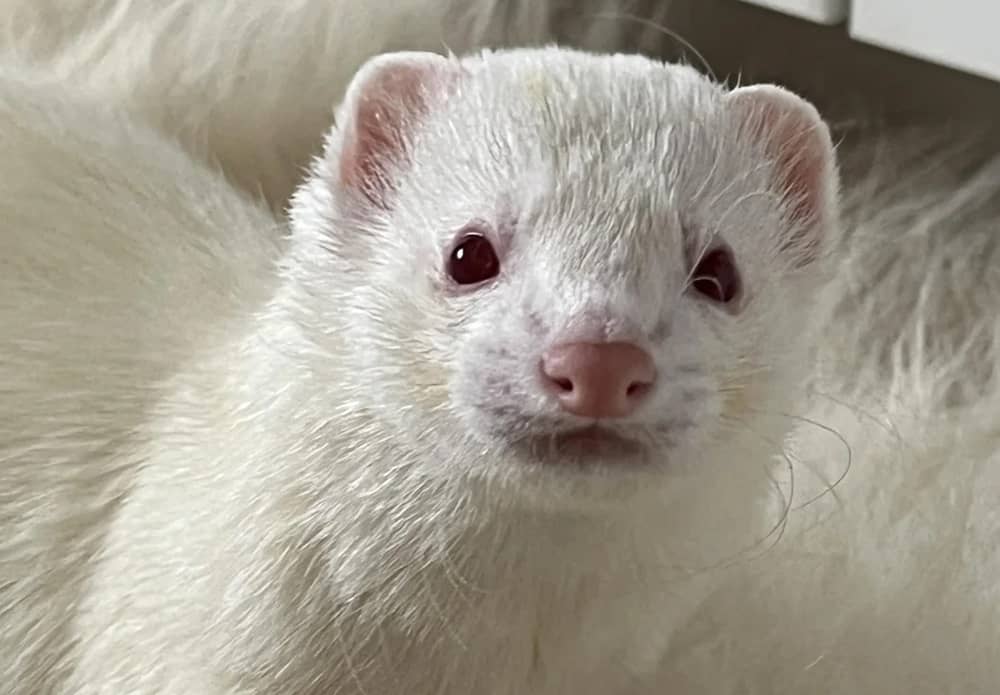
Distinguishing Ferrets Based on Patterns
Patterns are the actual designs of colors within a ferret’s coat, including masks, mitts, or blazes. One color can come in several different patterns, so actually there is a lot of variation in how a ferret might look. Now, let us look into the color and pattern of vibrant shades for the different kinds of domestic ferrets.
Standard Pattern
- Description: Solid color; no particular markings or patterns on the coat.
- Types: this can be in any color category, such as sable, chocolate, or cinnamon.
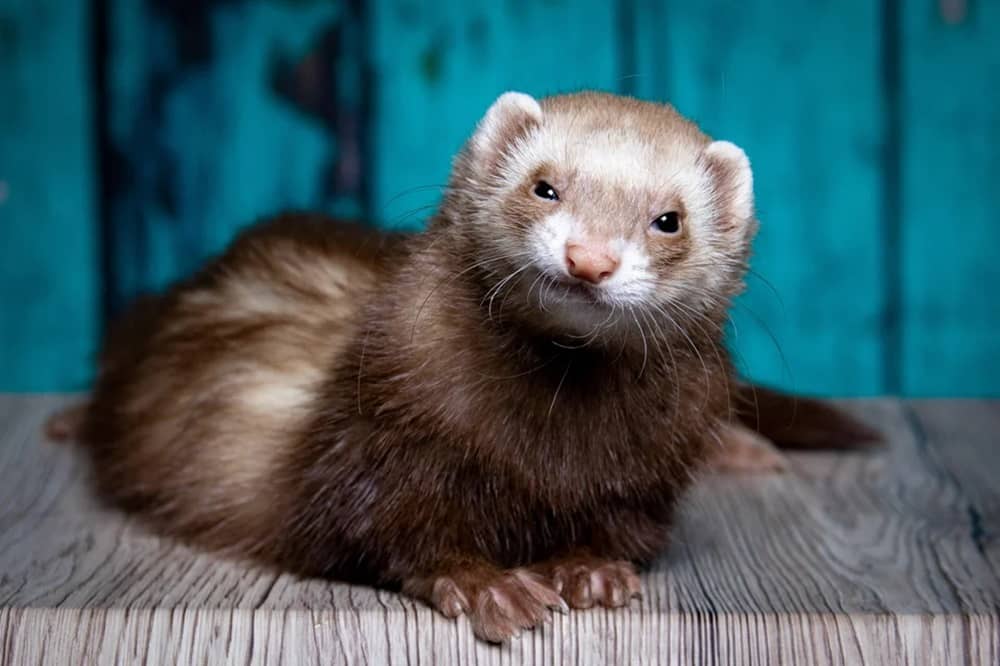
Blaze Pattern
Description: Blaze ferrets are named for the stripe of white that runs down the top of their head, back to the start of their tail. They may be any base color, for example, sable, cinnamon, or chocolate. Blaze ferrets may or may not have white mitts on their feet and a white bib on their chest.
Characteristics:
White stripe from the head to the back
Various base colors—sable, cinnamon, chocolate
White mitts on feet
White bib on chest
Personality:
Blaze ferrets are social and friendly. They are playful, for they are adventurous by nature.
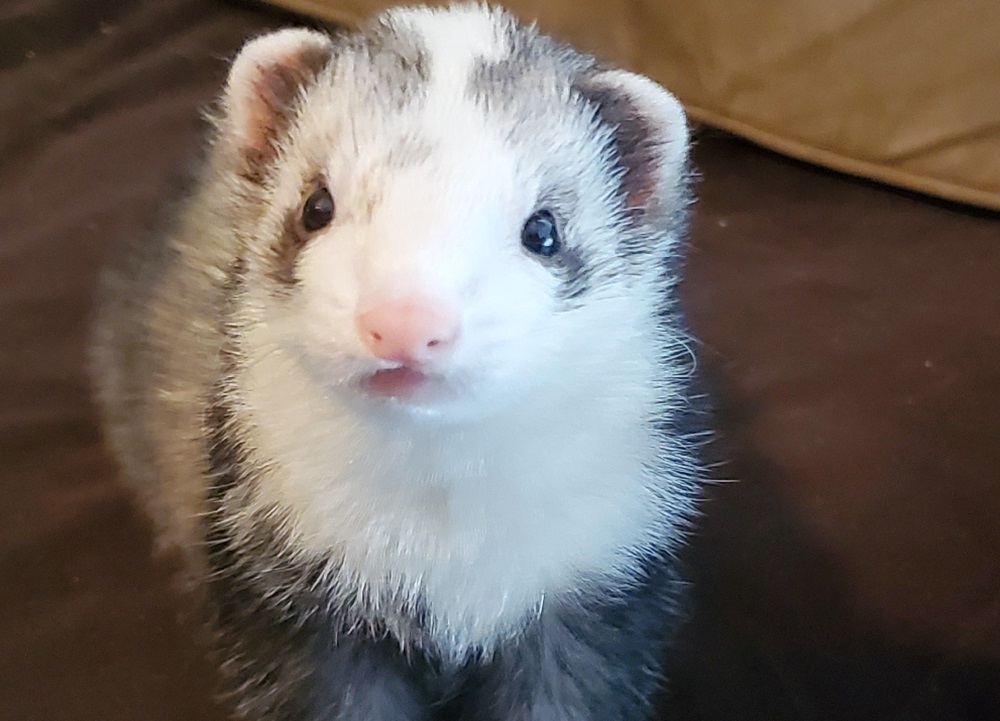
Panda Pattern
Description: Panda ferrets are characterized by a white or light color on the head and a much darker body. They have dark patches around their eyes, making them resemble panda bears in their appearance. Panda ferrets come in a wide array of base colors and patterns.
Characteristics:
White or light-colored head
Darker body
Dark patches around the eyes – panda markings
Various base colors and patterns
Personality:
The panda ferrets are social and affectionate. They like to bond closely with their owners, spending much time with them.
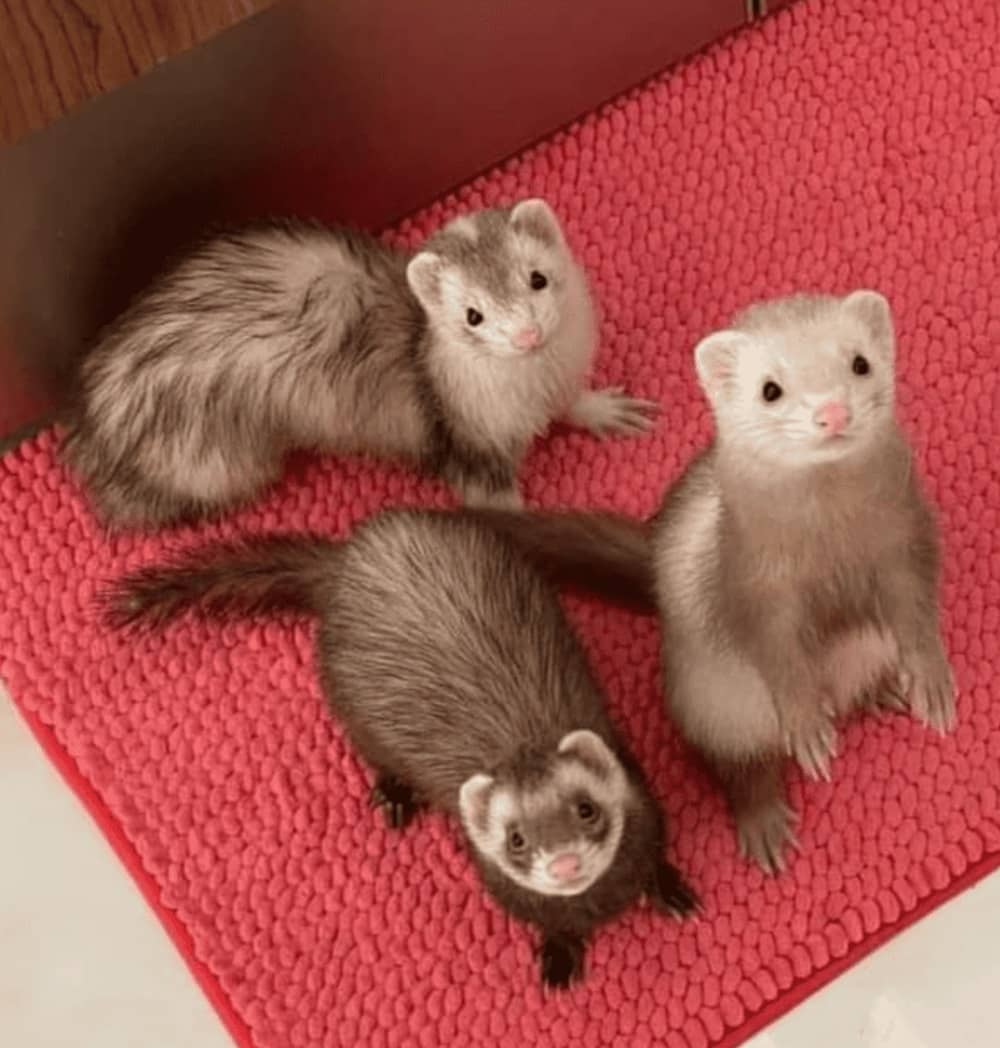
Mittened Pattern
Description: The mitt ferrets have white feet, which look just like little mittens. Any base color will do, but what really characterizes them is the white mitts on their feet. The mitt ferrets also have a white bib with other white markings on the body. This pattern can be in conjunction with any color.
Characteristics:
White-colored feet (mitts)
Any base color
Possible white bib with other white markings
Personality:
They are playful and full of energy. They love to explore the environment and indulge in interactive plays with owners.
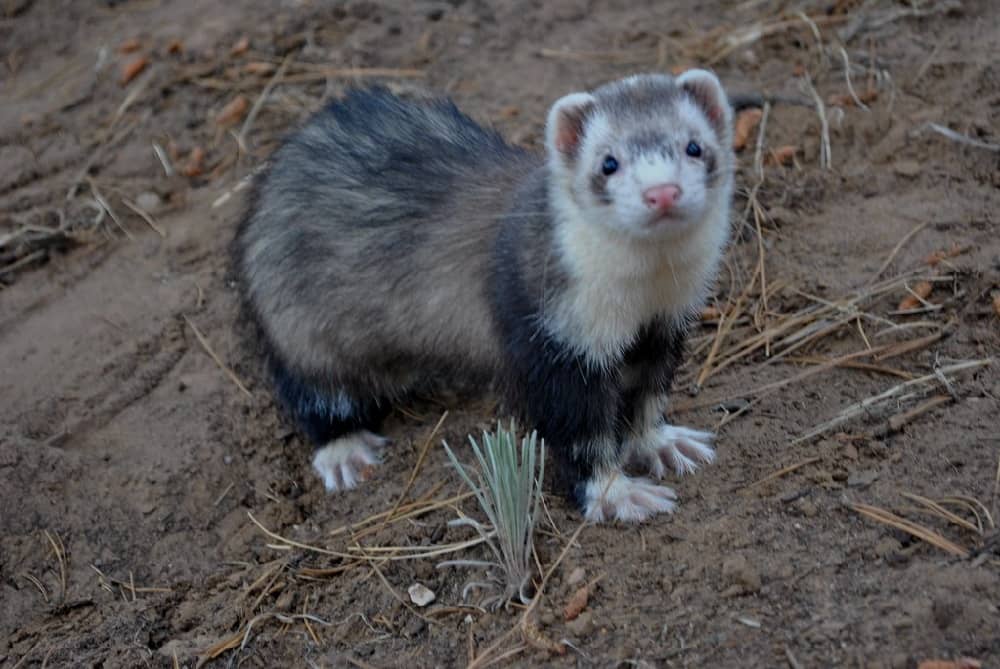
Roan Pattern
Description:
The roan ferret has a mix of dark and white hairs all over his coat, giving him a speckled or salt-and-pepper look. They may be in any basic color, like sable or chocolate. This effect may be very light or very heavy and appears in combination with any base color.
Characteristics:
A mix of dark and white hairs – roan pattern
Speckled or salt-and-pepper
Various base colors
Personality:
Curious and playful, the Roan ferret enjoys investigating its environment and relating to its owner.

Siamese Ferrets
Description: The Siamese ferrets are pointed with a coloration pattern on their fur very much like Siamese cats. Points, which refer to the ears, nose, paws, and tail, are darker compared to the body. Siamese ferrets may appear in various base colors, such as sable or chocolate.
Characteristics:
Darker points on ears, nose, paws, and tail
The lighter color of the body
Various base colors
Character:
Siamese ferrets are sensitive and social. They love to spend time with their owner or other ferrets.

Point pattern
- Description: Ferrets having a point pattern have dark fur on extremities—the ears, tail, and feet—compared to other parts of their body. Standard champagne, chocolate, cinnamon, or sable ferrets are point ferrets; however, their legs, feet, and tails have noticeably different color saturation. This explains why point ferrets are frequently called Siamese ferrets.Their face has a V-shaped mask, and their bottom has a distinct dark line; both are as vibrant as the color of their legs. Except for white, all colors exhibit this pattern.
- Characteristics: This pattern is much like some breeds of cats, for instance, the Siamese.
Mutt Ferrets
Description: The color and pattern of a mutt ferret cannot be included in any particular category, like color or pattern. Thus, they have an individual combination of colors and patterns. Mutts can carry various combinations, for example, sable, albino, blaze, mitt, and many more.
Characteristics:
Multicolored
Colored and patterned
Temperament:
The mutt ferrets are glowing with their individuality and an interesting way of self-expression. Very funny, inquisitive, and amiable.
Dalmation Ferret
One of the less common ferrets in the world is the dalmatian colored ferret. Usually nearly completely white, these ferrets have either red or black eyes. Their bodies are dotted with prominent black patches that resemble Dalmatian spots, arranged erratically. Their tails are frequently nearly completely black.
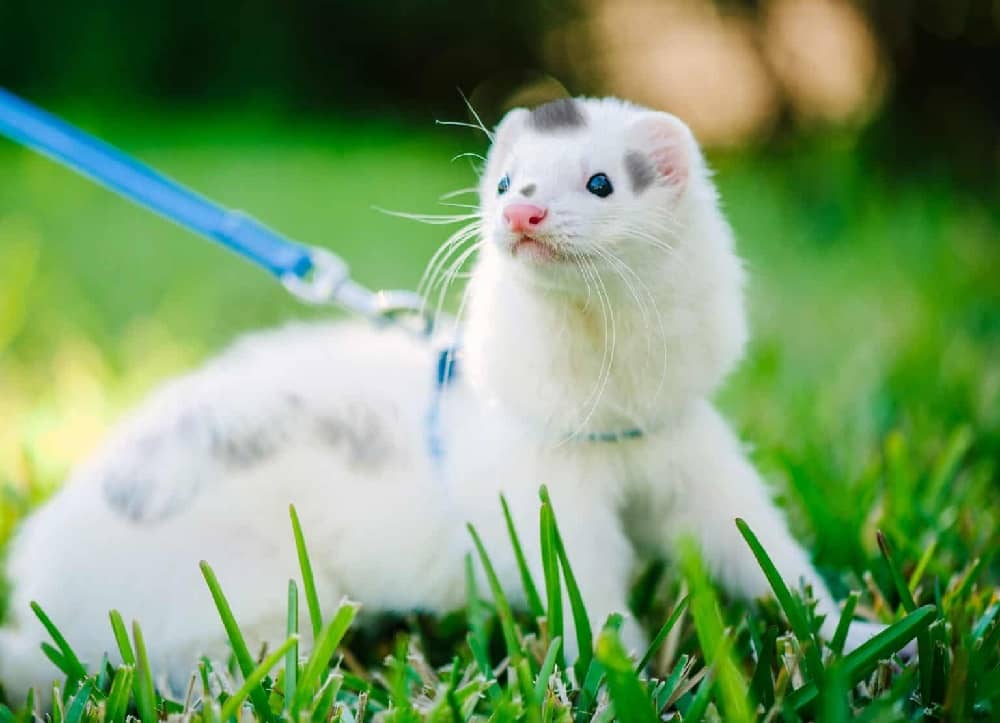
Choosing the Right Domestic Ferret
The selection of the right ferret for you should not only be based on the color and pattern of a ferret. The other parameters such as health, behavior, breeder’s information, and the ways it is raised and trained are equally important. You must be sure that you will be able to cope with their needs. Following are the tips for choosing the right ferret:
- Health Check
- Lively with shiny eyes and a glossy coat; avoid those that are going to be lethargic or very sickly.
- Temperament
- You should play for a while to get a feel for the general temperament of the ferret. Ferrets should be curious, and playful but not overly aggressive or timid.
- Breeder’s Reputation
- Buying from a breeder ensures that he is reliable and ethical in breeding ferrets.
- Adoption
- You may be lucky and get the chance to adopt your ferret through a ferret rescue organization. Most ferrets available for adoption are already socialized and healthy.
How to Understand Domestic Ferret Behavior?
Ferrets possess some behaviors that delight or confuse many new parents. Some of the following common ferret behaviors and what they mean are as follows:
- Dooking: Dooking is the happy clucking noise that ferrets make during playtime. It means your ferret is having fun.
- Weasel War Dance: The weasel war dance is done in a series of hops, jumps, and twists that a ferret makes when it becomes happy or excited. To most people, the moves would look chaotic, but in short, it simply means joy.
- Digging and Burrowing: Ferrets are natural diggers and burrowers; therefore, providing them with a box full of rice or pieces of paper that they can dig into will satisfy this instinctive behavior.
- Nipping and Biting: Ferrets nip and bite in play but should be discouraged gently by training and positive reinforcement. They need to learn not to bite.
Ferret-Proofing Your Home
Ferrets are reputedly fantastic escape artists and will fit into surprisingly small areas. How, then, can you safeguard your ferret? It is by ferret-proofing your home, and here’s how to do it:
- Close any small opening or hole that your ferret might be able to get wedged in or slip away from.
- Secure your cabinets and drawers to safeguard hazardous materials from your ferret.
- Take out small items that they can swallow or chew – this includes balls or cords
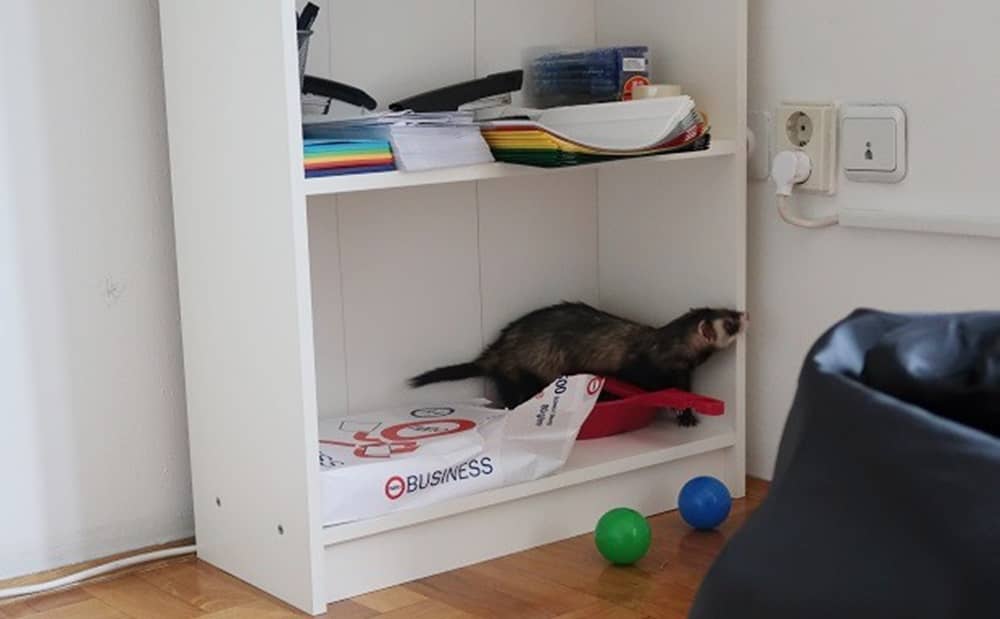
A ferret makes for a very enriching and satisfying pet. Being playful and smart, they bring a lot of joy and companionship into the owner’s life. However, to be in a position where you can offer your ferret a loving and fulfilling home, it is certainly necessary to know the various types of ferrets usually available in the domestic circuit and their various characteristics and needs.
Frequently Asked Questions
Question 1: What are the most common colors of domestic ferrets?
Answer: Common colors of domestic ferrets are albino, sable, cinnamon, chocolate, black sable, and champagne.
Question 2: How would someone distinguish an albino ferret from domestic ferret types?
Answer: An albino ferret will have a purely white fur color and red or pink eyes due to lack of pigmentation. Commonly, albinos are more sensitive to the brown consequence of bright light.
Question 3: How do I identify a sable ferret?
Answer: Sable ferrets have a very dark coat with a lighter undercoat, dark eyes, and a mask on the face.
Question 4: What is particular to blaze ferrets?
Answer: Blaze ferrets have big white stripes that originate from their head through their back, mitts that are white, and white bibs. They have base sites of different colors.
Question 5: Are there any health concerns specific to certain ferret colors or patterns?
Answer: Albino ferrets may be more sensitive to bright light. Otherwise color and pattern do not typically affect health
Question 6: What are panda ferrets?
Answer: Panda ferrets have a white or light-colored head and dark body with dark patches around their eyes like
panda areas.
Question 7: Can ferrets come in mixed colors and patterns?
Answer: Yes, the color and pattern can be of combinations like- blaze cinnamon -cinnamon-colored with a white blaze, panda black sable -black sable with panda markings.
Question 8: What should I take care of when selecting a ferret by color and pattern?
Answer: Those are the things that incorporate subjective factors, aesthetics with health and temperament. You need to get a feel for the ferret so that you can judge the personality and well-being of your potential new friend.
Conclusion
Overall, domestic ferrets come in a quite neat range of colors and patterns that show their character. From snow-white albino to striking blaze and panda patterns, ferrets offer such great diversity that is sure to please most of the loving hearts of pets. Knowing the types and their characteristics will help you choose a perfect companion for yourself about your lifestyle and preferences.
They are playful, curious, and affectionate animals who bring joy and companionship to an owner, even if they do bear knowledge of how to turn their structure to their favor. From the sleek, tuxedo-clad black sable to the wistful and rare cinnamon to the eclectic mutt ferret, all have very special qualities in their own right as great pets. With attention, proper care, and love, you shall secure for your ferret a happy and full life, and you will be ready to share in the good times they will bring into your home.
